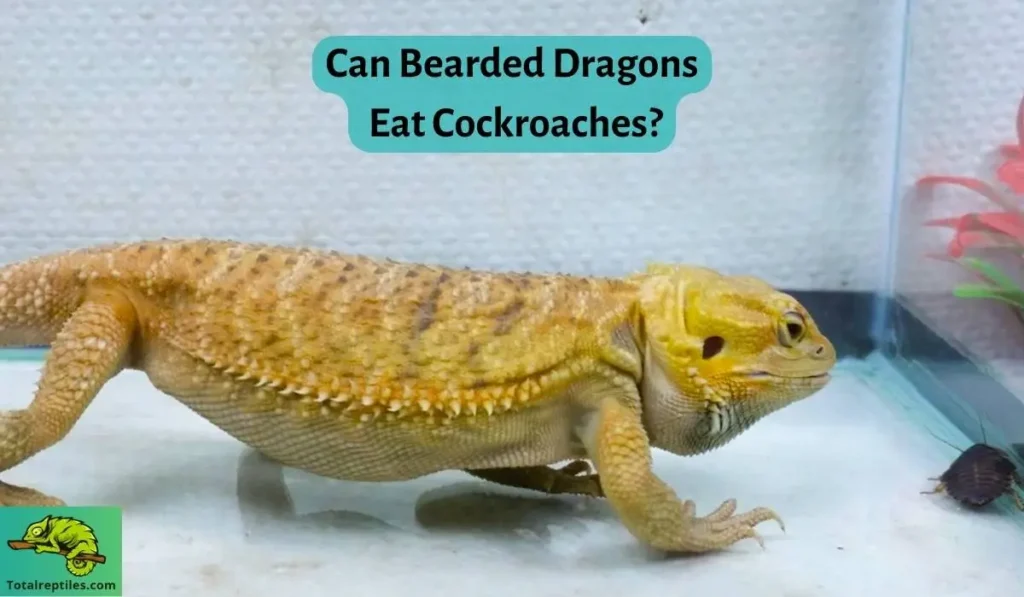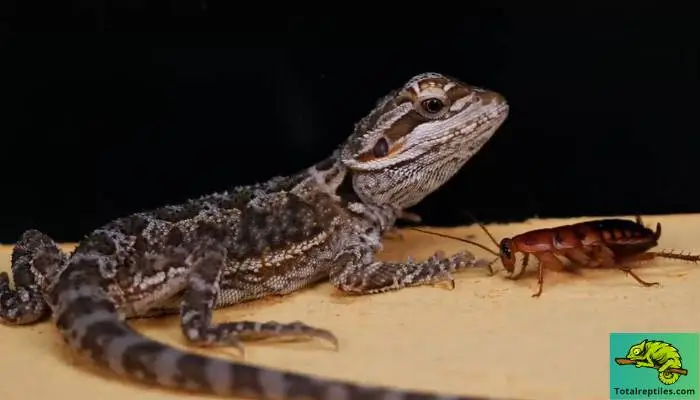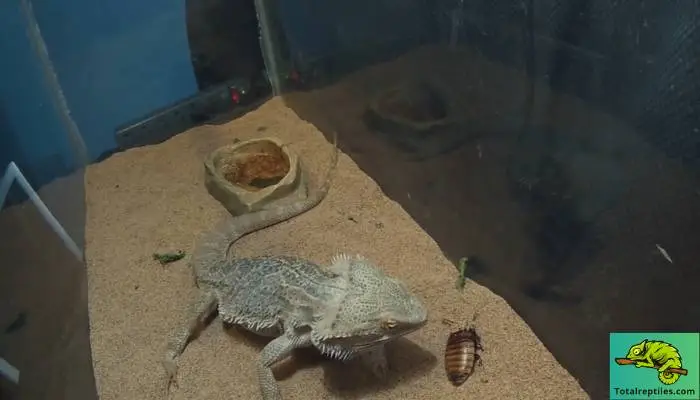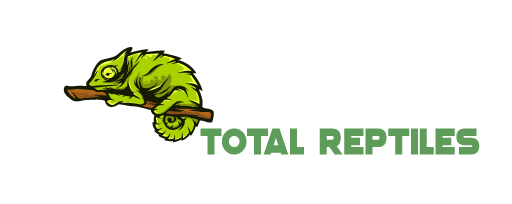While humans may despise the sight of a cockroach, it may leave a different impression on a beardie. But can bearded dragons eat cockroaches?
Bearded dragons of different stages can eat cockroaches several times a day. In fact, cockroaches are filled with potent nutrients suitable for the growth and development of your pet. However, scurrying cockroaches at home or outdoors is not part of this healthy regimen.
You can discover more regarding the matter and further information on feeding roaches to your dragon below.

Can Bearded Dragons Eat Cockroaches?
You can offer cockroaches to your bearded dragon because they are an excellent source of protein and fat. However, the owner must get these from pet stores that sell specifically bred insect feeders.
The American cockroach (Periplaneta americana) is one of the common examples to follow. We have provided its estimated nutritional content for you to understand how effective cockroach consumption is for a beardie.
According to a study, the values are as given:
| Nutrient | Composition (%) |
| Moisture | 12.42 ± 1.6 |
| Crude Protein | 8.72 ± 1.3 |
| Crude Fat | 17.64 ± 1.9 |
| Crude Fiber | 21.28 ± 2.1 |
| Crude Ash | 3.52 ± 0.8 |
| Carbohydrates (Dry Matter) | 87.56 ± 4.2 |
| Carbohydrate (NFE) | 48.73 ± 3.0 |
Besides, cockroaches contain a large number of minerals, such as magnesium, calcium, iron, potassium, zinc, phosphorus, copper, manganese, and sodium. Your pet reptile will be as healthy as it can get.
Want to learn more about the bearded dragon diet:
can bearded dragon eat dead crickets?
Advantages and Disadvantages of Feeding Cockroaches to Bearded Dragons
Through our deep dive into the subject, we have assessed both the positive outcomes and negative implications of feeding cockroaches to your pet dragon. We will discuss them in detail below.
Benefits of Feeding Cockroaches to Bearded Dragons:
Cockroaches are highly nutritious. They offer a remarkable source of protein, which is vital for the proper growth and development of a dragon of any life stage.
They can offer high calcium content if you gut load them properly with calcium rich foods. Plus, they have excellent water content to keep your dragon hydrated.
Cockroaches can provide a more natural feeding experience as they mimic insects that dragons usually encounter in the wild.
Additionally, the chitinous exoskeleton of a cockroach contain fiber that aids in promoting a healthy gut.
Roach insects can add diversity to regular diets while delivering tasty flavors and a range of nutrients. Your beardie will never feel bored when preying and feeding on cockroaches.
Risks of Feeding Cockroaches to Bearded Dragons
- Some cockroaches can lead to pesticide exposure. Ingesting them can cause serious illnesses in a dragon.
- They may also be carriers of bacteria, parasites, and diseases that are easily transmitted to your reptile after ingestion.
- Baby beardies or juveniles face the constant risk of choking on roaches if these are not appropriately sized (the width between the dragon’s eyes).
- While cockroaches are filled with nutrients, they are insufficient to be considered a staple meal.
Which Types of Cockroaches Are Safe to Feed Bearded Dragons?
With thousands of cockroach species, finding the safer ones for your beardie can be overwhelming.

You may already know a name or two, but this section will provide a complete guide to harmless cockroach feeders along with their nutritional values.
| Roach Species/Nutrients | Moisture | Crude Protein | Crude Fat | Crude Fiber | Ash |
| Dubia Roach (Blaptica dubia) | 65.6% | 23.4% | 7.2% | 2.9% | 1.2% |
| Discoid Roach (Blaberus discoidalis) | 66% | 20% | 7% | 3% | 1% |
| Red Runner Roach (Blatta lateralis) | 71% | 18% | 6% | 2% | 2% |
| American Cockroach | 74.9% | 16.9% | 3.3% | 3.2% | – |
| Madagascar Hissing Cockroach (Gromphadorhina portentosa) | 69.2% | 19.5% | 6.3% | 2.6% | 4% |
| Death’s Head Roach (Blaberus craniifer) | 79% | 11% | – | – | 0% |
Other options include the green banana roach (Panchlora nivea), lobster roach (Nauphoeta cinerea), orange-head roach (Eublaberus posticus), surinam roach (Pycnoscelus surinamensis), pallid roach (Phoetalia pallida), little Kenyan roach (Blaberidae sp. Kenya), etc.
All these are filling (meaty), hydrating, and trigger natural foraging behavior in a captive dragon.
Can Bearded Dragons Eat Hissing Cockroaches?
Yes, as long as they are captive-bred and not wild-caught to get exposed to parasites or pesticides, hissing cockroaches are perfectly safe for your reptile buddy.
These cockroaches are commonly known as Madagascar hissing cockroaches and offer an excellent water source. However, they have a lower nutritional value compared to other roach options like Dubia.

Hence, we suggest serving these occasionally as part of a varied diet.
Can Bearded Dragons Eat Islander Roaches?
Experts and professional vets typically do not recommend islander roaches or Pacific beetle cockroaches as feeder insects.
They may be suitable for some reptiles in their native habitats, but islander roaches are not generally given to captive dragons due to concerns about their possible toxicity.
Nevertheless, they may be safe to consume if specifically harvested as reptile food. These roaches are also protein-loaded and have a meaty filling to keep a beardie happy and healthy.
How Often to Feed Cockroaches?
Here is a rough feeding frequency you can follow based on the size and age of your bearded dragon:
| Bearded Dragon (Age) | Feeding Frequency (Cockroaches) |
| Hatchling to 2 months (baby) | 2-3 times/day |
| 2-4 months (baby) | Daily |
| 4-6 months (juvenile) | 3–4 times/week or every other day |
| 6–12 months (sub-adult) | Every 2-3 days |
| Over 12 months (adult) | 2-3 times/week |
Note that the quantity may vary depending on the type of roaches you feed because the nutritional content for each species is slightly different.
Frequently Asked Questions
1. Can bearded dragons eat German cockroaches?
German cockroaches are unsafe for your bearded dragon despite containing protein ranging from 56% to 58%. They are considered pests and may carry life-threatening bacteria and parasites.
2. Can bearded dragons eat palmetto bugs?
Palmetto bugs have a similar appearance to American roaches and are akin to Dubia roaches’ nutritional content.
However, they may harbor parasites and diseases if served wild. It is better to opt for bred feeders to impede health issues.
3. Can bearded dragons eat discoid roaches?
Yes, they have a similar nutritional composition as Dubia roaches and can be offered as a nourishing meal as part of the plant and insect matter diet.
Discoid roaches are rich in protein and have a good calcium-to-phosphorus ratio. They are low in fat as well.
4. Can bearded dragons eat giant Islander roaches?
It depends on whether they are wild-caught or harvested to be consumed as pet feeders. The latter is your best option to ensure no parasite, bacteria, or disease transmits into the dragon. Wild-caught islander roaches can carry toxic substances that may harm your pet reptile.
Conclusion
Once again, can bearded dragons eat cockroaches? They certainly can and will enjoy every bit of it. But you should provide the ones that are safe and nutritious for them.
Some species may not be available for purchase due to state regulations. So, you must opt for a trustworthy reptile pet store that sells legal insect feeders.
Additionally, always check the feeder size before placing it in the enclosure. An insect should not be larger than the space between a beardie’s eyes.
Lastly, gut-load the roaches before offering them. This will ensure the healthy growth of your lovely dragon.
References
- Boate, Ukoroije, and Bawo Suotonye. “Cockroach (Periplaneta americana): Nutritional value as food and feed for man and livestock.” Asian Food Science Journal 15.2 (2020)
- Care, Bearded Dragon. ‘ragon’ (2013)
- Ngaira, V. M., et al. “Nutritional Value of German Cockroach Meal (Blattela germanica) as a SuperPRO Feed.” Asian Journal of Research in Animal and Veterinary Sciences 10.1 (2022)

